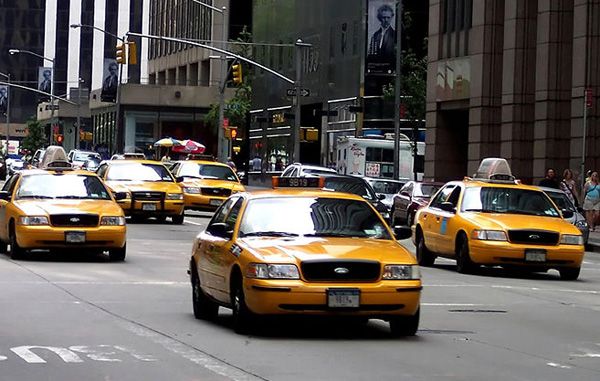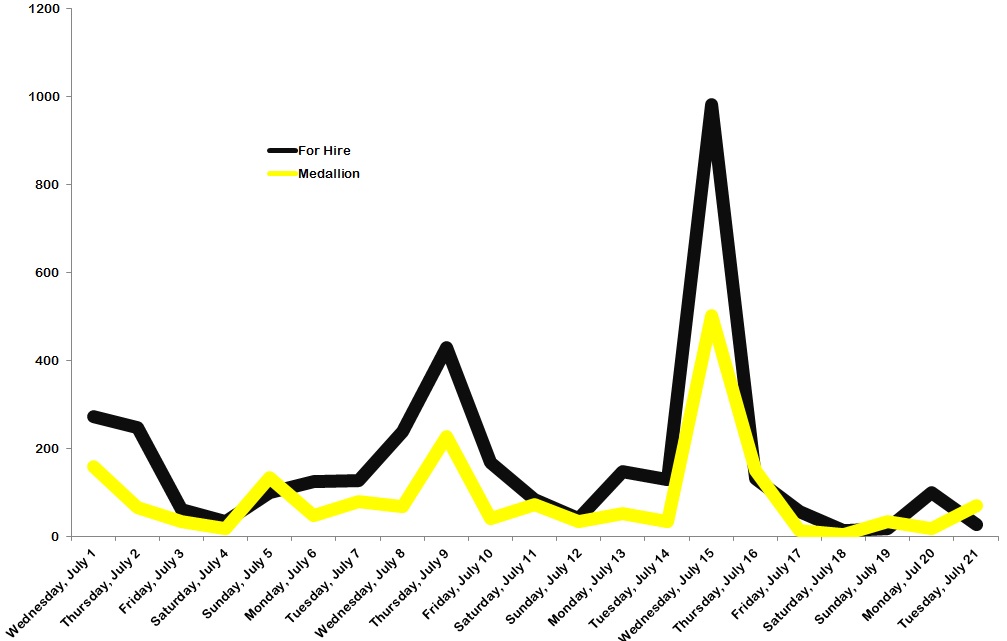
Bill de Blasio isn’t the first mayor to get a few bruises in a fight over private transportation on city streets (although his wounded might be deeper than most). Mayor Bloomberg was forced to back down on wheelchair accessibility. Mayor Giuliani was scolded by a federal court from trying to stop cabbies from protesting taxi rule changes he’d proposed. According to the Encyclopedia of New York, a bribe from a taxi magnate is one of the sins that drove Mayor James Walker from office in 1932.
Since the first metered taxis hit the streets in 1907, there’s been tension over how the city regulates the industry–and ample evidence that the industry really needs regulation. The city began setting taxi fares in 1913 and selling medallions after a “taxi war” broke out in the 1920s.
They day-to-day effort to regulate the private companies that make money driving people on city-owned streets is reflected in the extensive data kept by the city’s Taxi and Limousine Commission.
Of particular interest are the lists—very, very long lists—of open violations by for-hire drivers and taxis. The list of violations by medallion holders is just under 12,000 entries long and has 52 cases that are more than two decades old. The for-hire vehicle list is fresher (1997 is the oldest vintage on it) by longer, with more than 17,600 tickets listed, covering alleged offenses like a for-hire car picking up at a taxi stand or a driver threatening someone.
From July 1 through 21, as the battle between Uber and de Blasio escalated, here’s how the open violations break down by date of issuance. Worth noting is the fact that there are close to four times as many for-hire vehicles (51,000 at the end of FY2014) as there are medallion cabs (13,600 or so) on the roads:









